
How Chemotherapy Is Done?
Introduction to Chemotherapy
The journey through cancer treatment often involves various therapeutic approaches, and one of the most well-known is chemotherapy. This widely recognized treatment plays a crucial role in combating cancer cells, and understanding how chemotherapy is administered can empower individuals facing cancer. In Navi Mumbai, centers like Mangal Prabhu Hospital offer comprehensive care under the expertise of skilled Oncologists in Navi Mumbai.
What is Chemotherapy?
Chemotherapy, often referred to as “chemo,” is a medical treatment that employs powerful drugs to target and destroy rapidly dividing cells. While cancer cells are the primary target, chemotherapy can also affect healthy cells that divide quickly, such as bone marrow, digestive tract, and hair follicles.
What is the Purpose of Chemotherapy?
The primary goal of chemotherapy is to eliminate or control the growth of cancer cells. It can be used at different stages of cancer treatment:
a) Before Surgery:
Neoadjuvant chemotherapy aims to shrink tumors before surgery, making them more manageable to remove.
b) After Surgery:
Adjuvant chemotherapy is administered after surgery to eliminate any remaining cancer cells and reduce the risk of recurrence.
c) Primary Treatment:
In cases where surgery or radiation therapy may not be viable, chemotherapy is the immediate treatment.
d) For Palliative Care:
In advanced stages, chemotherapy can alleviate symptoms and improve the quality of life.
How Chemotherapy is Done?
The process of chemotherapy involves several key steps:
A) Consultation and Planning:
Patients undergo a thorough consultation with an oncologist before initiating chemotherapy. A personalized treatment plan is developed based on cancer type, stage, overall health, and medical history.
B) Drug Administration:
Chemotherapy drugs can be administered in various ways, including intravenously (IV), orally (in the form of pills or liquids), or through injections. The chosen method depends on the specific drugs and the patient’s condition.
C) Treatment Cycles:
Chemotherapy is often administered in cycles, each consisting of a treatment period followed by a rest period. This approach helps minimize damage to healthy cells and allows the body to recover.
D) Outpatient or Inpatient:
Depending on the intensity and duration of treatment, chemotherapy sessions may be conducted on an outpatient basis, allowing patients to return home afterward or in an inpatient setting for more extensive regimens.
What are the Side Effects of Chemotherapy?
While chemotherapy is a powerful tool against cancer, it can also lead to side effects due to its impact on average, rapidly dividing cells. Common side effects may include:
- Fatigue
- Nausea and Vomiting
- Hair Loss
- Bone Marrow Suppression
- Gastrointestinal Issues
- Mouth Sores
- Neuropathy
Conclusion
Chemotherapy is a dynamic and evolving aspect of cancer treatment, representing a cornerstone in the fight against this formidable disease. In Navi Mumbai, facilities like Mangal Prabhu Hospital, with dedicated oncologists, play a vital role in providing comprehensive Chemotherapy Treatment in Navi Mumbai. While the process can be challenging, understanding the purpose, procedure, and potential side effects empowers individuals on their cancer journey. With ongoing advancements in medical science, chemotherapy significantly improves outcomes and enhances the quality of life for those undergoing cancer treatment.

What is a High-Risk Pregnancy?
During pregnancy, both mother and fetus require regular monitoring and care to avoid possible risk or fatal. A high-risk pregnancy is a critical issue that can increase the risk of her and her baby’s death. Mangal Prabhu has the best Gynecologist and Obstetrician in Navi Mumbai who can help an expecting woman avoid high-risk pregnancy and help better the growth of their children.
Definition of High-Risk Pregnancy
High-risk pregnancy is one of the most well-known health issues occurring due to various factors. It is a pregnancy that carries a higher degree of complication to a mother or fetus. However, high-risk pregnancy does not always mean that the mother and fetus will have issues during pregnancy, labor, and delivery, but they may require some special health needs.
Causes of High-Risk Pregnancy
Some of the most common causes which can lead to high-risk pregnancy are:
1. Maternal Age
Women who are usually under 17 years of age or more than 35 years of age have a higher risk of complications during pregnancy. Age can lead to various issues, such as chromosomal abnormalities and conditions related to pregnancy.
2. Pre-Existing Medical Conditions
Some women with diabetes, heart disease, hypertension, autoimmune issues, infectious disease, etc, have a higher risk of suffering from high-risk pregnancy. These conditions have a potential impact on the mother and baby and can cause severe complications.
3. Multiple Gestation
Twin or multiple pregnancies usually have a higher risk as they are more complex pregnancies with increasing risk of complications.
Also Read: What Is The Most Common Cause Of Premature Birth?
Complications of High-Risk Pregnancies
People with pre-existing issues and deviant lifestyles have an increased health risk during pregnancy. However, some of the possible complications are:
a) Preterm Labor
Sometimes, high-risk pregnancy can lead to preterm labor, which can sometimes cause premature birth and other health issues to the fetus.
b) Gestational Diabetes
High-risk pregnancies sometimes develop gestational diabetes, which can lead to increased sugar levels and cause risk to both mother and baby.
c) High Blood Pressure
High blood pressure or hypertension can lead to severe risk or be fatal to both mother and baby if not treated well.
Management of High-Risk Pregnancies
Management of high-risk pregnancies is essential to avoid undesirable complications. However, the best pregnancy care hospital in Navi Mumbai follows the given management plan for better treatment of issues:
i) Nutrition
A mother should follow better nutrition and diet, according to dietitians, to support mother and baby and manage high-risk pregnancies.
ii) Exercise
Pregnant women must do exercises depending on their issues to promote overall well-being during high-risk pregnancies. However, before exercising, an individual must consult with a doctor and dome under certain precautions.
iii) Stress Management
Stress can lead to a higher -risk of pregnancy complications. However, it would be best to adopt stress reduction methods like meditation and relaxation exercises to manage it.
Conclusion
High-risk pregnancies can lead to severe complications and preterm delivery. Thus, it would be best to adopt proper monitoring, management approaches, treatment, and specialized care to avoid potential complications associated with pregnancies. However, Mangal Prabhu Hospital has the best management and treatment to prevent pregnancy complications.
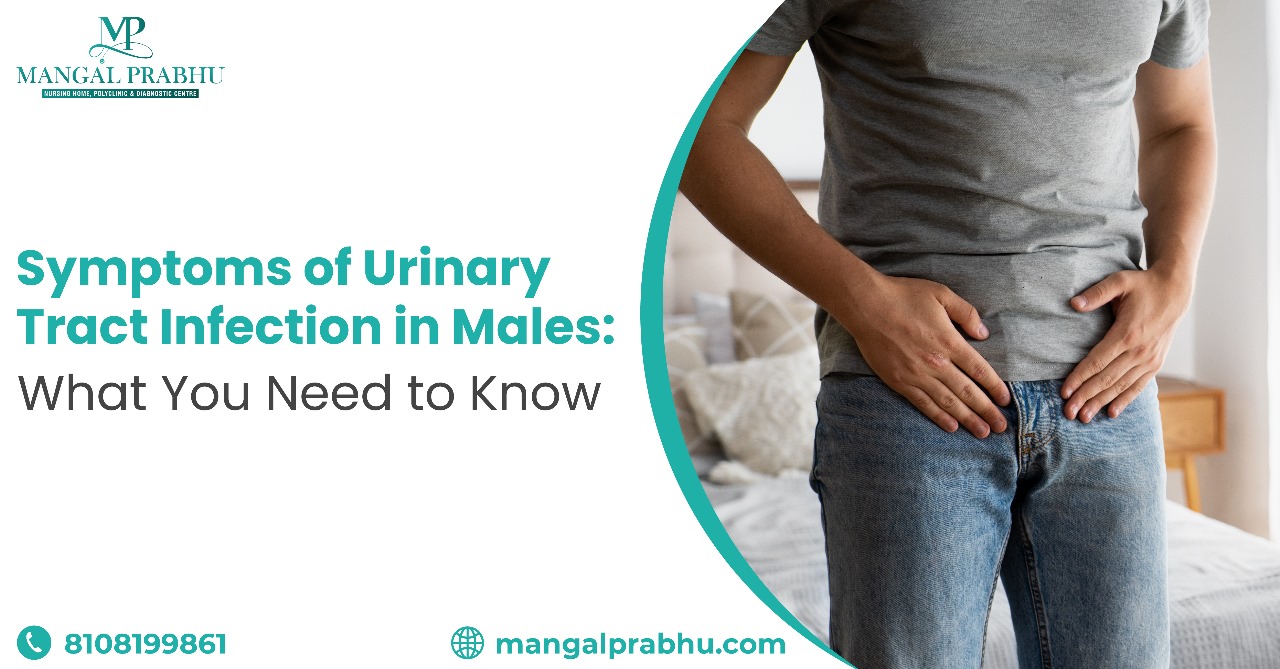
Symptoms of Urinary Tract Infection in Males: What You Need to Know
You may have heard of urinary tract infections (UTIs) in women. But do you know men can also get UTIs? The urinary tract consists of the parts that are responsible for producing the urine and letting it out of your body. In men, these parts include the kidneys, bladder, ureters, and urethra. UTI occurs when bacteria from your skin or the rectum reach any part of the urinary tract and multiply. The bacteria can grow in your kidneys, bladder, or the tubes that carry urine from your kidneys to your bladder. A male urologist in Navi Mumbai can detect UTIs in men and recommend the best antibiotics to treat the infection.
Signs and Symptoms of UTI in Men
Doctors classify the urinary tract infection into two types—upper tract and lower tract. Upper-tract infection occurs when bacterial growth starts in the kidneys and ureters, while the lower tract covers your prostate, urethra, and bladder. Here are a few common symptoms of UTI in men:
- Pain while urinating accompanied by a burning sensation
- Heaviness in your lower abdomen
- Blood in the urine
- Inability to hold pee
- A sudden urge to urinate
- It feels like your bladder does not empty despite urinating frequently
If the condition worsens, you might experience additional symptoms, like fever, chills, and fatigue. The most common cause of UTI is the bacteria E. coli, which transfers to your bladder through the urethra. Certain medical conditions, like diabetes, kidney stones, a history of kidney disease, and fetal incontinence can put men at an increased risk of UTI.
Also Read: How Do A Woman Get An Urinary Tract Infection?
Diagnosis and Treatment for UTIs in Men
You must see a specialist in a urology hospital in Navi Mumbai to get an accurate diagnosis. The healthcare provider will ask about your medical history and might also collect your urine sample to detect the signs of bacterial infection and white blood cells. In some cases, the doctor recommends an ultrasound to ensure your urinary tract is functioning well.
Treatment for UTIs
UTIs are treatable and you will most likely feel better after the antibiotic course that your doctor recommends. They will choose antibiotics based on your symptoms and the affected areas in your urinary tract. It’s important to drink enough water. This will help the bacteria flush away through urine. If the bacteria has infected your lower urinary tract, you may have to take antibiotics for 1-2 weeks. If it’s spread beyond that, the course will last for a few weeks and you may have to follow up with the doctor regularly.
Prevention Tips
You can take steps to prevent bacteria from reaching your urinary tract. Here’s what will help.
- Do not hold your pee
- Drink enough fluids, especially if you work in hot weather
- Clean your genitals regularly
Urinary tract infections are not as common in men as in women, but they can occur and are treatable. The above tips will help you reduce the risk of UTI. see a urologist immediately if you notice any signs of UTI.
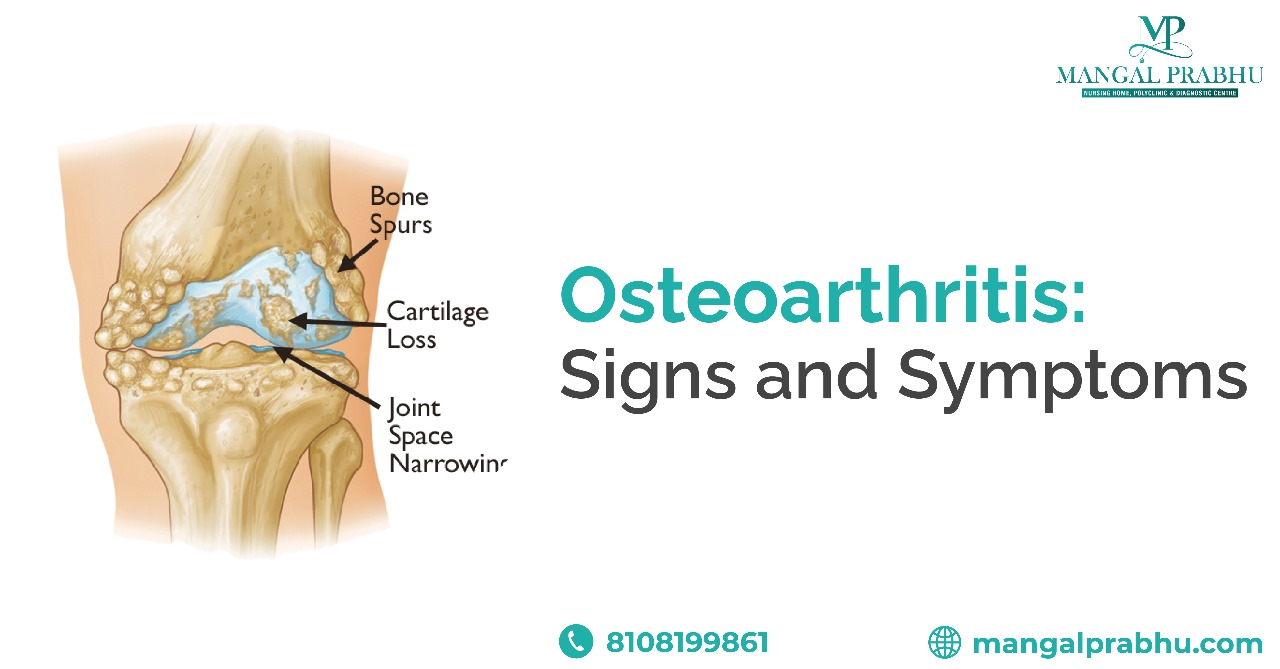
Osteoarthritis: Signs and Symptoms
What is Osteoarthritis?
Osteoarthritis is the most common form of arthritis that can affect your hip, knee, and hand joints. In osteoarthritis, the cartilage that serves as a cushion for your joints can get damaged either due to aging or other causes. When the cartilage is worn, the bones might rub together when you walk, move, or engage the affected joint. You can visit an orthopedic hospital in Navi Mumbai to discuss the best treatment for osteoarthritis.
The condition can affect your mobility severely, as you won’t be able to use your joints as freely as before. Although many home remedies and medications can help manage your pain and discomfort, they can’t reverse the joint damage. For that, you may need knee replacement surgery (depending on how severely it has affected you).
Signs and Symptoms of Osteoarthritis
The most common cause of osteoarthritis is aging. As you age, your cartilage wears down, limiting your motion. However, any fall, a direct hit on your joint, an accident or anything that damages your joint can lead to cartilage damage and hence osteoarthritis. Anyone can develop osteoarthritis, but some people are at increased risk. Examples include older people, diabetic patients, and those with autoimmune diseases.
People with osteoarthritis might develop symptoms that tend to worsen gradually. Here are the common signs of the condition.
- Stiff Joints: You might feel stiff joints as soon as you wake up or stay inactive for some time.
- Pain and Tenderness: You will feel pain when walking, moving, or performing any strenuous physical activity. Likewise, putting any pressure near or on the affected joint might hurt.
- Inflexible Joints: Osteoarthritis can result in the loss of mobility eventually. The condition keeps worsening over time until you will lose your full range of motion.
- Popping Sound: You might hear a popping sound when using the affected joint.
- Inflammation: The worn joint can get inflamed and cause swelling.
Also Read: Is Walking Good For Torn Ligaments?
Diagnosis and Treatment
An orthopedic doctor in Navi Mumbai will conduct a physical exam and order a few screening tests, including a CT scan and MRI, to identify the level of damage to your cartilage. They will ask questions like, how long you have been experiencing the symptoms. They might also order blood tests to rule out the possibility of any other issues.
Here are a few treatment options that can make the condition manageable.
- Medication: Over-the-counter painkillers can relieve pain in the joints. It can be taken orally or in the tropical form, through ointment.
- Exercise and Therapies: Mild exercises like swimming and aerobics can help strengthen the muscles around the affected area and reduce joint tenderness and stiffness. Hot and cold therapies can also relieve the pain and discomfort greatly.
- Using Mobility Devices: You’ll be advised to use a cane and other walking aids to take the pressure off your joint and move without pain.
Surgery is usually not required unless the condition has worsened to a point where you can’t move your joint at all. In that case, you need a complete joint replacement surgery.
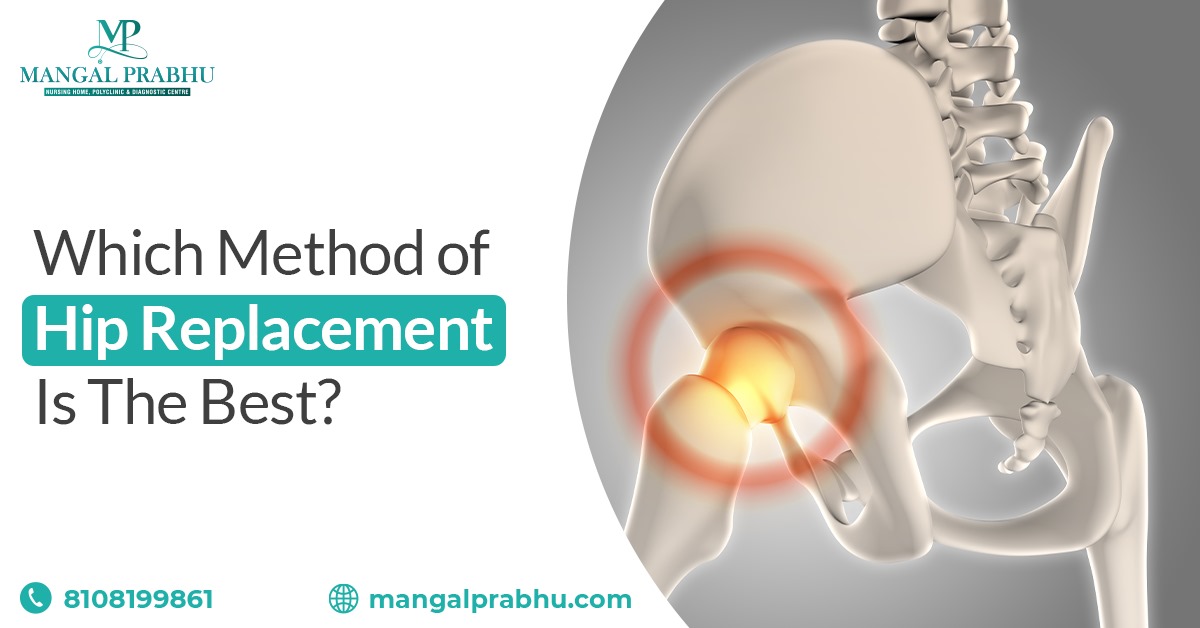
Which Method Of Hip Replacement Is The Best?
Introduction
Hip replacement surgery is a common orthopedic procedure to relieve pain and improve mobility in individuals with hip joint issues. However, with various methods available, patients often wonder which is the best approach for their specific condition. Here, you can explore different types of hip replacement procedures and their advantages and disadvantages. It will help you understand which hip replacement method is most suitable for you.
Different Types of Hip Replacement Procedures
Hip replacement surgery offers several approaches tailored to the patient’s condition and requirements. The three primary methods are:
1. Total Hip Replacements
Total hip replacements involve replacing the hip joint’s ball and socket with prosthetic components. This procedure is suitable for patients with severe arthritis, joint degeneration, or significant damage to the hip joint.
2. Partial Hip Replacements
Partial hip replacements, also known as hip hemiarthroplasty, involve replacing only the damaged or diseased portion of the hip joint, typically the ball component. This method is often chosen for specific hip fractures or conditions that affect only one part of the hip joint.
3. Revision Hip Replacements
Revision hip replacements are performed when a previous hip replacement has failed or needs to be replaced due to various reasons, such as wear and tear of the prosthetic components or infection.
Advantages and Disadvantages of Each Method
Each method of hip replacement has its unique advantages and disadvantages:
Advantages of Total Hip Replacements
- Effective for severe hip joint damage.
- Provides long-term relief from pain and improved joint function.
- Suitable for various hip conditions, including osteoarthritis and rheumatoid arthritis.
Also Read: Lifetime Precautions After A Hip Replacement
Disadvantages of Total Hip Replacements
- More extensive surgery with longer recovery time.
- Greater risk of dislocation.
Advantages of Partial Hip Replacements
- Smaller incisions and less bone removal lead to quicker recovery.
- Reduced risk of dislocation.
- Suitable for specific hip fractures or localized joint damage.
Disadvantages of Partial Hip Replacements
- Limited applicability to certain conditions.
- It may require a second surgery if the entire joint deteriorates over time.
Advantages of Revision Hip Replacements
- Corrects issues with previous hip replacements.
- Replaces worn or damaged prosthetic components.
- Restores joint function.
Disadvantages of Revision Hip Replacements
- It is more complex than primary hip replacements.
- Longer recovery and rehabilitation.
Which Method of Hip Replacement is the Best?
The choice of the best method of hip replacement depends on individual factors, such as the patient’s age, the severity of the hip condition, and the surgeon’s assessment. There is no one-size-fits-all answer to this question, as what works for one patient may not be suitable for another. The decision should be made in consultation with an experienced hip replacement surgeon, such as a Hip Replacement Surgeon in Navi Mumbai at Mangal Prabhu Hospital. A skilled surgeon will conduct a thorough evaluation, consider the patient’s needs, and recommend the most appropriate treatment method.
Conclusion
In conclusion, there is no definitive answer to which hip replacement method is the best, as it varies from patient to patient. The choice depends on individual circumstances and the expertise of the surgeon. What is essential is that patients seek expert care from facilities like Mangal Prabhu Hospital, which specializes in Hip Replacement Surgery in Navi Mumbai. With the guidance of experienced professionals, patients can receive the most suitable hip replacement procedure to improve their overall quality of life.
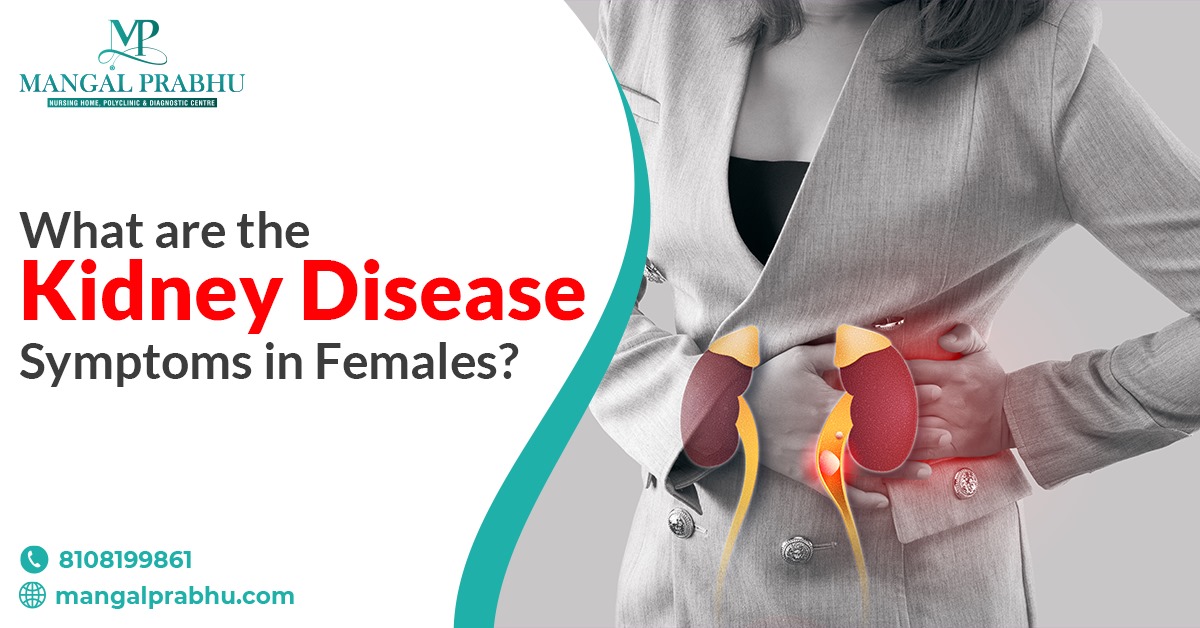
What are the Kidney Disease Symptoms in Females?
Kidney disease or kidney failure occurs when your kidney stops functioning. It’s usually the gradual loss of normal function, which results in its inability to filter waste from your blood. Kidney disease can be a life-threatening condition, as it can result in the excess buildup of electrolytes and waste in your blood.
If you experience a problem with urination, see a kidney specialist/nephrologist in Navi Mumbai to rule out the possibility of kidney failure. Your healthcare provider might recommend medication to slow down the damage, but eventually, you will need dialysis or a kidney transplant.
Symptoms of Kidney Disease
Kidney disease develops slowly in men and women. The symptoms usually don’t appear until it has reached an advanced stage. Based on the severity of the condition, here are some common symptoms that women diagnosed with kidney disease might experience.
- Nausea and vomiting
- Swollen ankles and feet
- Dry skin
- Hypertension
- Shortness of breath and chest pain if the excess fluid accumulates in your chest
- Frequent urination
- Insomnia
- Feeling dizzy
- Inability to concentrate or think clearly
- Brownish or reddish urine
- Bubbly urine
As mentioned previously, it’s advisable to see a doctor immediately if you notice any change in the pattern of urination, blood pressure, and swelling in the ankle. Kidney diseases do not produce severe symptoms unless the damage has reached the irreversible stage.
Also Read: How Stones Are Formed In Kidney?
Diagnosis of Kidney Disease
Chronic kidney disease can be diagnosed with a routine blood and urine test. The test is recommended for people with diabetes, hypertension, kidney injury, cardiovascular disease, and others who are at increased risk of developing kidney failure. The test is used to measure the level of waste product accumulated in your blood, called creatinine. A healthy kidney is capable of filtering up to 90ml/min. So, if the rate falls below that, you might be suffering from a kidney disease.
The doctor might also recommend a urine test, which helps evaluate the level of creatinine in your urine. In some cases, the doctor might recommend an ultrasound or an MRI to get a clear picture of the kidneys and detect any blockages. They might also conduct a biopsy where a small tissue from your kidney is extracted and checked under a microscope to determine the level of damage.
Treatment and Prevention of Kidney Disease
There’s no permanent cure for kidney disease, but a few steps can ensure your kidneys stay healthy.
- Manage your blood glucose levels if you are a diabetes patient
- Manage your blood pressure
- Do not take any medication that could worsen your kidney function
- Maintain your weight
- Follow a healthy lifestyle
- Avoid smoking
Conclusion
Kidney dialysis is an effective kidney disease treatment in Navi Mumbai. It’s recommended when you have reached the last stage of kidney disease and the last resort is to either get a kidney transplant or dialysis to save yourself. It removes excess waste from your body through a catheter. If that doesn’t work, your doctor might have to perform a kidney transplant to replace your kidney with the donor’s kidney.

Signs And Symptoms Of Asthma
Asthma is a lung disease and a chronic condition that requires ongoing medical treatment. Usually, when a person breathes, their airways are relaxed. However, in Asthma patients, the airway is narrow and blocked from mucus production. As a result, you might experience shortness of breath or difficulty breathing. You could also hear the whistling sound when breathing. A general physician in Navi Mumbai can diagnose Asthma based on your symptoms.
Asthma isn’t always a cause for concern for some people. It’s just a minor convenience, but for others, it can interfere with their daily life. Asthma attacks, especially, are life-threatening. Fortunately, medication can relieve these symptoms.
Types of Asthma
Asthma is categorized into different types based on the symptoms and complications. Here are the three types of Asthma:
- Intermittent: It doesn’t last long. Intermittent asthma goes away and comes back. It doesn’t persist.
- Persistent: Some patients are diagnosed with persistent asthma, which occurs often and the symptoms are more severe than intermittent asthma. The patient might also experience an asthma attack at times.
- Allergic: You can experience the symptoms of asthma when exposed to certain elements you are allergic to. This could be pet dander or mold.
Signs and Symptoms of Asthma
As mentioned earlier, the symptoms you experience depend on the type of asthma and what triggers it. Let’s check out a few common signs and symptoms of asthma:
- Chest pain
- Wheezing or whistling sound when you exhale
- Difficulty sleeping or staying asleep
- Coughing
- Shortness of breath
If the asthma worsens, you might experience these symptoms more often. You may have to use an inhaler. Asthma can be triggered by certain chemicals, gas, fumes, and dust.
Also Read: 5 Factors To Consider While Choosing A Right Multispecialty Hospital
Diagnosing Asthma
Your healthcare provider will ask about your family and medical history. You must tell them the history of any lung disease or existing allergies and respiratory disorders. They will order Spirometry, which measures airflow through your lungs to detect asthma. They might also order a blood test and chest X-ray to confirm the diagnosis.
Treatment for Asthma
Asthma can be treated with anti-inflammatory medication, which helps reduce inflammation in your airways, prevents mucus, and allows air to easily enter and exit the airways. You can take asthma medication orally, i.e. pills, or get an inhaler.
Although asthma is a chronic condition, it can be avoided if you know the trigger and stay away from it. For instance, if you are allergic to dust and dirt, make sure you work and stay in a clean, dust-free environment.
Identifying asthma symptoms early and taking quick action will prevent the condition from worsening. If you experience shortness of breath and it keeps getting worse, see a healthcare specialist immediately.
Conclusion
Asthma cannot be completely cured, but avoiding triggers and noticing the warning signs of an upcoming asthma attack can help you get quick relief. An asthma patient can go on to live a healthy and productive life given that they manage it well. Also, it’s important to check whether you have asthma or other respiratory disorders, which might produce similar symptoms.

How Stones Are Formed In Kidney?
Kidney stones, scientifically known as nephrolithiasis, are a common and painful urological condition. These small, solid, crystalline masses can form in the kidneys, causing immense discomfort and sometimes requiring medical intervention.
Let’s explore the formation of kidney stones, their causes, symptoms, and available treatment options. Here, you can also learn about the preventive measures, and the importance of seeking specialized care, such as Kidney Stone Treatment in Navi Mumbai at a leading healthcare facility for urological concerns.
What is a Kidney Stone?
Kidney stones are hard deposits in the kidneys when certain minerals and salts in the urine bind together. These stones can vary in size, from tiny particles resembling grains of sand to larger, more noticeable masses. Kidney stones can be composed of different substances, with calcium oxalate being the most common.
Causes of Kidney Stones
Understanding the formation of kidney stones begins with recognizing the factors that contribute to their development:
- A diet high in oxalate-rich foods like spinach, beets, nuts, and chocolate can increase the risk of kidney stone formation. Excessive consumption of sodium and animal protein can also be culprits.
- Inadequate fluid intake can lead to concentrated urine, making it easier for minerals to crystallize and form stones.
- Certain conditions like hyperparathyroidism and urinary tract infections can promote stone formation.
- Some medications, such as diuretics and antacids containing calcium, may contribute to kidney stone development.
Symptoms of Kidney Stones
The presence of kidney stones can result in a range of symptoms, including:
- Painful urination.
- Frequent urination in small amounts.
- Blood in the urine.
- Nausea and vomiting.
- Fever and chills.
- Severe pain in the back or side, often radiating to the lower abdomen and groin.
Also Read: Foods To Avoid With Kidney Stones
Treatment Options for Kidney Stones
When addressing kidney stones, prompt and appropriate treatment is essential. Kidney stone treatment at Mangal Prabhu Hospital in Navi Mumbai is offered by specialists who employ advanced techniques to manage this condition effectively.
a) Medication
Medication to relieve pain and facilitate stone passage may be prescribed for smaller stones that can be passed naturally.
b) Extracorporeal Shock Wave Lithotripsy
This non-invasive procedure uses shock waves to break down stones into smaller pieces, making them easier to pass.
c) Ureteroscopy
A thin tube with a camera is inserted into the urinary tract to locate and remove or break up stones.
Prevention of Kidney Stones
Taking steps to prevent kidney stones is crucial, especially if you have a history of stone formation or are at risk due to dietary choices or medical conditions:
- Stay well-hydrated by drinking plenty of water throughout the day to dilute urine and prevent mineral buildup.
- Limit high-oxalate foods, sodium, and animal protein consumption. Increase your intake of citrate-rich foods like citrus fruits.
- If you have a history of kidney stones, regular check-ups with a kidney stone specialist in Navi Mumbai can help monitor your condition and make necessary adjustments to your treatment plan.
Conclusion
Kidney stones are a painful and potentially recurrent condition that can significantly impact one’s quality of life. If you or a loved one is experiencing symptoms of kidney stones, seeking specialized care, like kidney stone treatment at Mangal Prabhu Hospital in Navi Mumbai, can make a significant difference in managing and preventing this condition. Remember that early intervention and preventive measures can help you enjoy a life free from the discomfort of kidney stones.

Can Hernia Be Treated Without Surgery?
A hernia is an unusual bulge caused by the organs that push through the weak muscle walls. The bulge is visible when you cough, sneeze, or put any kind of pressure on the affected area. Hernia can occur in the groin area, on your abdomen, and other parts of the body. They can be a birth defect or occur as you age. Hernias are also common in people who have undergone major surgery. Fortunately, hernia treatment in Navi Mumbai is available for those experiencing pain, discomfort, and other symptoms of hernia.
Non-Surgical Treatment Options
Unfortunately, the hernia will require surgery eventually. It doesn’t go away on its own. You can find temporary relief from certain medications, corsets that keep the bulge in place, and mild exercises, but these are only temporary solutions.
1) Medication:
Medication alone can’t help you get rid of a hernia, but it can relieve the symptoms and discomfort. For Hiatal hernia, you can take over-the-counter medication to relieve acid reflux and heartburn. Likewise, painkillers can help relieve pain.
2) Exercise:
If you practice high-intensity exercises or weightlifting, you might have to ask your healthcare provider if that’s safe. Any exercise that puts excess pressure on the bulge can make it worse. Talk to a hernia surgeon in Navi Mumbai and discuss the best exercises to prevent hernia from growing.
3) Dietary Changes:
Hiatal Hernias can cause GERD, heartburn, and many digestive issues. These are often triggered by certain foods that can cause your stomach acid to find its way to your throat. Take note of the foods that trigger these symptoms and focus on a healthy and balanced diet. Try to eat small and frequent meals.
4) Maintain a Healthy Weight:
Being overweight increases your risk of developing or worsening the existing hernia. It’s important to discuss your health goals with a healthcare provider and follow a weight-loss plan to shed those extra pounds.
Pros and Cons of Non-Surgical Treatments
As mentioned previously, hernia cannot be cured nor can it be reduced with manual treatments. You can take some steps to avoid the discomfort, pain, and other symptoms associated with the bulge, but you are eventually going to undergo surgery to have it fixed. The good news is a surgical procedure for hernia is minimally invasive and doesn’t take much time to heal.
You can also consider alternatives to open surgery, like robotic surgery or laparoscopic procedure. That said, not all types of hernias cause symptoms. There’s a chance the condition might go unnoticed and won’t require any repair either. It’s still best to consult your healthcare provider to ensure it won’t cause any complications. Let’s check out the pros and cons of non-surgical hernia treatments.
Advantages
- It can help reduce your hernia symptoms
- The non-invasive procedure doesn’t require any post-operative care
- You can carry out your routine activities
Disadvantages
- High risk of bowel obstruction
- Possibility of strangulation
- Hematoma
- Infections
See a healthcare specialist if you see the signs of hernia. Even if it’s causing any symptoms, it’s best to talk to a professional to rule out the possibility of any complications.
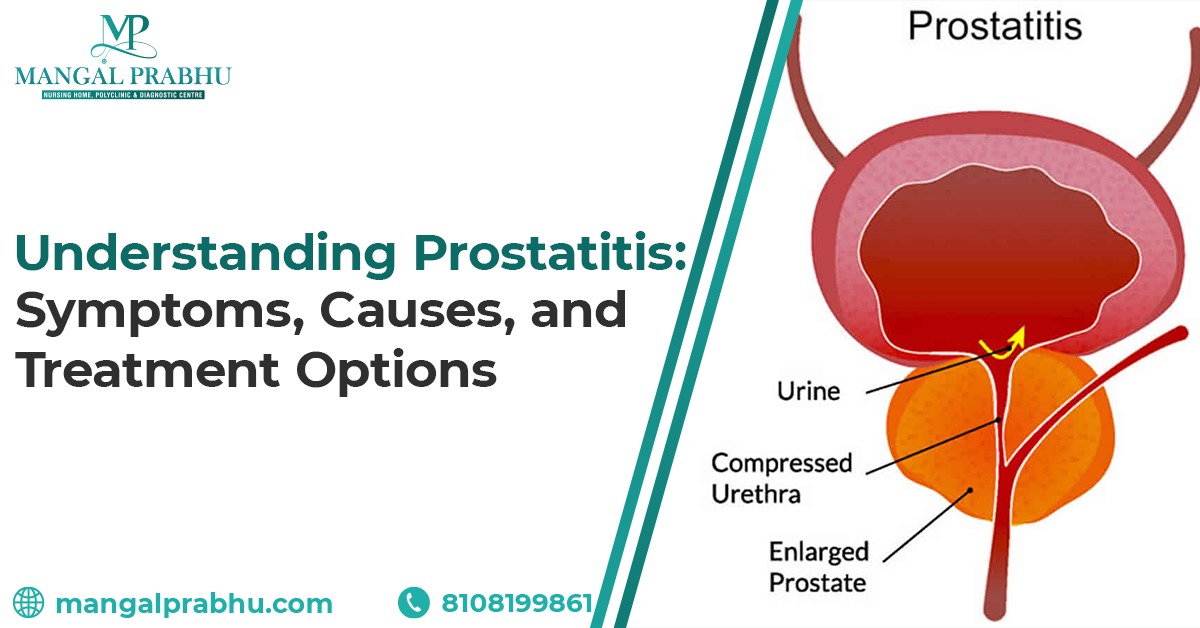
Understanding Prostatitis: Symptoms, Causes, and Treatment Options
Introduction to Prostatitis
Prostatitis is a common condition that affects many men. It refers to the inflammation of the prostate gland. The prostate gland is a small, walnut-sized organ located just below the bladder in men. It plays a crucial role in the reproductive system, producing semen that carries sperm. Prostatitis can cause various symptoms and discomfort. Hence, you should understand its symptoms, causes, and available treatment options. Here, you can learn about the available options for Prostate Infection Treatment in Navi Mumbai.
Symptoms of Prostatitis
Prostatitis can manifest in several ways. Its symptoms can range from mild to severe. Here are some common symptoms associated with prostatitis:
- Patients often experience pain in the lower abdomen. It can be sharp, dull, or throbbing in nature.
- Prostatitis can lead to urinary problems.
- Some men with prostatitis may notice sexual dysfunction.
- In some cases, prostatitis can cause flu-like symptoms.
Causes of Prostatitis
Prostatitis can have various causes, including bacterial infections, nonbacterial causes, and inflammatory conditions. Bacterial prostatitis occurs when bacteria infect the prostate gland, leading to inflammation. On the other hand, nonbacterial prostatitis can result from factors like autoimmune disorders or physical injury to the prostate.
Also Read: When Should I See A Urologist?
Treatment Options for Prostatitis
The treatment for prostatitis largely depends on its underlying cause and severity. Here are some common treatment options that Mangal Prabhu Hospital offers:
- Bacterial prostatitis is typically treated with antibiotics to eliminate the infection.
- For nonbacterial or chronic prostatitis cases, anti-inflammatory medications may help reduce inflammation and alleviate symptoms.
- Over-the-counter pain relievers like ibuprofen or acetaminophen can help manage pain and discomfort associated with prostatitis.
- In some instances, alpha-blockers may be prescribed to relax the muscles in the prostate and bladder, improving urinary symptoms.
- Pelvic floor physical therapy can benefit individuals with chronic prostatitis by targeting muscle tension and improving pelvic floor function.
- Making lifestyle changes such as avoiding spicy foods, caffeine, and alcohol, as well as managing stress.
Prevention Tips for Prostatitis
While not all cases of prostatitis can be prevented, there are steps you can take to reduce your risk:
- Use condoms to reduce the risk of sexually transmitted infections that could lead to prostatitis.
- Drinking plenty of water can help maintain urinary tract health and reduce the risk of infection.
- Eating a balanced diet of fruits, vegetables, and whole grains can support prostate health.
- Staying physically active can help improve circulation and reduce the risk of prostate problems.
- Chronic stress can weaken the immune system, making the body more susceptible to infections. Practice stress-reduction techniques like meditation and yoga.
Conclusion
Prostatitis is a condition that can affect men of all ages, causing discomfort and disrupting daily life. If you experience prostatitis symptoms, seeking medical attention is essential. You can receive comprehensive care and specialized treatment for prostatitis and other urological conditions at Mangal Prabhu Hospital, a renowned healthcare facility with an expert Urologist in Navi Mumbai. Early diagnosis and appropriate treatment can help you manage prostatitis effectively and improve your quality of life. Remember to follow prevention tips and consult a healthcare professional for personalized guidance on prostate health.
